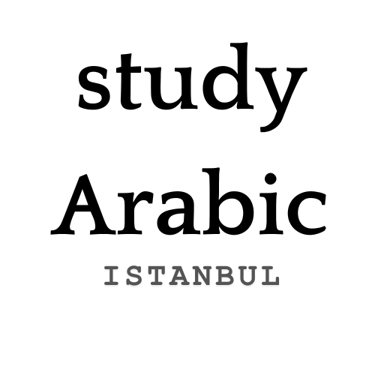Serendipity and the Arabic Language
Hafez Ibrahim’s poem and the metaphor of the diver embodies the journey of linguistic serendipity. The shell (صَدَفَة) is not just a physical object but a metaphor for Arabic itself—a protective layer that, when approached with reverence, reveals "coincidental" wonders (صُدْفَة) to those who dive deep.
5/31/20253 min read


"I am the sea in whose depths the pearls are lying; have they asked the diver about my shells (treasures)?" This line in Hafez Ibrahim’s famous poem on the Arabic Language illustrates the vastness, depth, and abundance of precious jewels within the language, remaining concealed from those unwilling to explore. The "diver" symbolizes the scholars, poets, and dedicated learners who possess the courage and patience to navigate the depths of Arabic. Thus, the final stanza holds significance not only for its poetic elegance but also for its compelling call to action: it advocates for a renewed commitment to exploration, scholarship, and appreciation of the Arabic language in a period when it was under threat.
Ḥāfiẓ Ibrahim (1871–1932) emerged as a prominent Egyptian poet during the early 20th century and played a pivotal role in the Arabic literary renaissance, known as al-Nahda. He was born to an Egyptian father and a Turkish mother, and his profound love for literature and language earned him the title of "Poet of the Nile." This nickname not only reflects his Egyptian roots but also signifies his eloquent voice that resonated with the populace. Hafez Ibrahim contributed to the revival and modernization of Arabic poetry, utilizing classical forms to articulate contemporary social and political issues. His verses celebrated Egypt’s identity and heritage, and he boldly employed poetry as a means of social commentary on the pressing matters of his era. This fusion of classical style with urgent themes positioned Hafez Ibrahim at the forefront of a revivalist movement aimed at reaffirming the significance of Arabic literature in a swiftly evolving world. It was in this context that he took up his pen to advocate for the Arabic language when he perceived it to be under threat.
The poem culminates in its most renowned imagery – Arabic is likened to a vast ocean teeming with concealed treasures. "I am the ocean, in whose depths the pearls are hidden," the language proclaims. This striking metaphor encapsulates the essence of the poem: Arabic is profoundly deep and rich, harboring countless words and wonders beneath its surface, awaiting discovery.
A focused analysis of the final stanza of Hafez Ibrahim’s "اللغة العربية" (The Arabic Language), exploring the diver-shell-pearl analogy shows its profound link to serendipity and linguistic discovery:
1. The Diver as Seeker of Knowledge:
The "diver" represents the poet, scholar, or learner immersed in Arabic’s depths. The act of diving symbolizes rigorous engagement—not superficial study but a plunge into linguistic, cultural, and historical layers.
2. The Shell (الصَّدَفَةُ) as Serendipitous Vessel:
While "pearl" (اللُّؤْلُؤ) is explicitly mentioned in earlier stanzas, the shell (صَدَفَة) is the implied vessel hiding the pearl. Crucially, صَدَفَة (shell) and صُدْفَة (coincidence) share the same Arabic root (ص-د-ف).
This root conveys curvature, concealment, and unexpected encounters. The shell physically curves around the pearl, just as coincidence curves around hidden meaning.
3. Pearl as revelation:
The pearl symbolizes linguistic gems: rare words, layered meanings or cultural insights. Its beauty is inaccessible without cracking the shell—i.e., embracing the "coincidental" process of exploration.
4. Serendipity (الصُّدْفَة) in Discovery:
Arabic’s root system (اشتقاق) creates organic connections. For example:
- صَدَفَ (to avert/chance upon) → صُدْفَة (coincidence)
- صَدَفَة (shell) → a natural container for chance treasures.
Diving deeper reveals these "beautiful coincidences": words that share roots but unveil unexpected relationships (e.g., عِلْم (knowledge) and عَلَم (flag/symbol)).
5. The Metaphor’s Deeper Resonance:
Effort vs. Fortune: The diver’s precision reflects disciplined study, but the pearl’s discovery feels fortuitous—mirroring how linguistic mastery blends intent and accident.
Arabic as a Living Ocean: Just as a diver trusts the sea’s hidden wealth, learners trust Arabic’s depths to yield pearls when engaged authentically.
Cultural Epiphany: For Hafez Ibrahim, this symbolizes Arabic’s resilience—its "pearls" (cultural identity) survive colonial erosion, awaiting rediscovery by devoted divers.
In conclusion, Hafez Ibrahim’s work is not simply a beautiful poem; it reminds every new generation that the Arabic language is a rich repository of wonders – an expansive sea of pearls – ready for those who will appreciate it and reveal its gems to the world.
Hafez Ibrahim’s poem and the metaphor of the diver embodies the journey of linguistic serendipity. The shell (صَدَفَة) is not just a physical object but a metaphor for Arabic itself—a protective layer that, when approached with reverence, reveals "coincidental" wonders (صُدْفَة) to those who dive deep. The shared root ص-د-ف poetically binds the act of finding (coincidence) with the object found (shell/pearl), suggesting that in Arabic, beauty and chance are etymologically destined to meet.
The miracle of Arabic lies not in its pearls alone, but in the shells that teach us to embrace the unexpected.
